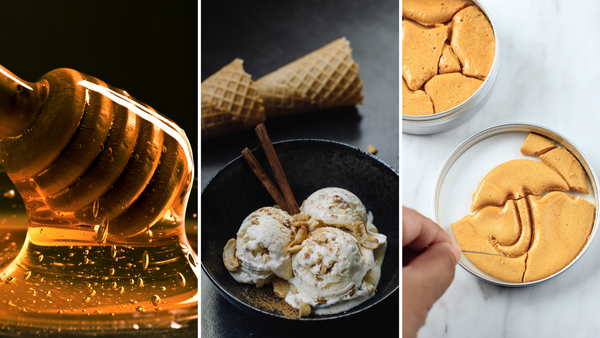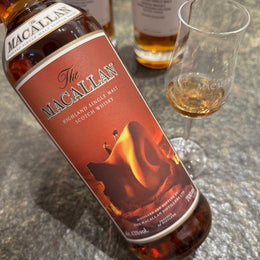FRAGRANT AND FLORAL
Note: We assign every bottle we review to one of five Flavour Camps, based on the most dominant flavours found. The Flavour Camps are : (1) Fragrant and Floral, (2) Fruity and Spicy, (3) Malty and Dry, (4) Rich and Round and (5) Smokey and Peaty. To learn more about each Flavour Camp, please click here.

“The older the whisky, the better the whisky!”
That is the first of many widely-held assumptions that Bruichladdich Distillery wants to debate.

Consider its flagship expression that comes in a fully opaque aqua-coloured bottle that wouldn’t look out of place in a Tiffany & Co’s. We cannot see the colour of the whisky inside. This is intentional. The message is that older (and hence darker-coloured) whisky isn’t necessarily better, and that we should be looking to other indicators of quality.

Respectable experts agree. Silvano Samaroli - legendary single malt dealer from Italy who has produced a litany of Sotheby-worthy bottlings - has himself said that 8 years could be sufficient aging for a good whisky:
“Islay whiskies are all smoky!”
Islay whiskies - think Lagavulin, Laphroaig and Caol Ila - are famously smoky and peated. Hence the widely-held assumption that whiskies from the Islay region are definitely made with peat. However, since the 1960s till date, Bruichladdich has stubbornly been the only Islay distillery to produce unpeated whisky as one of its main products.
So what’s with Bruichladdich and its offbeat approach to making whiskies?
Know what you’re drinking

All that fuss is really to allow you to know precisely what you are drinking - from the farming origin, to the species of the barley. Bruichladdich stands out in the Scotch industry for its belief that the terroir of the barley used really affects the flavour and texture of your whisky. It wants you to experience that as fully as possible.

How does Bruichladdich do so? It bottles the Classic Laddie at slightly younger ages to limit the influence of oak, and keep the terroir influence fresher. The idea of terroir also explains why this line of whiskies are unpeated in spite of the expectation that Islay whiskies are smoky. There is no heavy smokiness that could distract us from the subtle flavours influenced by terroir.

Finally, the barley used must obviously all come from some specific place for it to even make sense to talk about terroir influence. The Classic Laddie only uses 100% Scottish barley (this isn’t standard practice in the Scotch industry), which according to Bruichladdich is ideal for making a good and complex single malt.
Detailed ingredient lists online
Here’s one more cool thing I discovered. If you purchase a bottle of Classic Laddie, you would notice a code at the bottom of your bottle- just like the one I have in my hands:

Go on to this page of Bruichladdich’s website. You would find a section where you could ENTER YOUR CODE to reveal your the ingredient list for your specific bottle. Feel free to try my code: 21/203

You receive a detailed list of the various constituent whisky used to make your Classic Laddie. There’s information on:
- barley origin (It appears there is some Islay-grown and some Scottish mainland barley)
- cask type (There is a good deal of 1st fill bourbon and French wine casks)
- number of casks used (81 casks)
- the vintage of the youngest constituent whisky (2014)
My Classic Laddie appears to be a batch made of 82 casks in total with 8 cask types spanning 6 vintages and barley from 3 different locations. It appears to be at least 7 years old because 2014 is the latest distillation year, while the bottling year is 2021.
We can also calculate that there are 5 older components that have been matured up to at least 8, 9, 10, 11 and 12 years of age. How? Bruichladdich does not disclose the distillation years of older components to comply with UK and EU law. Yet with some quickmath, we can venture a clever guess. The recipe states that there are 6 different vintages. We know that 2014 is one of vintages, and also the latest vintage. This means that there are 5 remaining components would be distilled no earlier than 2013, 2012, 2011, 2010, 2009.
And that primer, let’s turn to see how the terroir of Scottish barley is indeed reflected in Bruichladdich’s flagship expression.

Tasting Notes

The colour is pale gold, or sunflower oil.
On the nose, a layered richness of bright, floral, estery notes. Opens with fresh cut flowers from the florist’s, layered on a bed of soft grass accompanied by very light, sweet notes of candy floss. Very little oakiness is felt at the beginning.

Remarkably smooth, the aroma does not singe the nose in the slightest despite the high ABV.
The light sweetness is very enduring, but the aroma begins to reveal some depth. There’s a hint of pine nuts, sweet almond marzipan, and a mineral note that is described by some as sea spray.

It is worth letting this sit for a minute. The earlier estery notes begin to subside, and a mild oak influence really seems to grow. The aroma turns towards honey, vanilla cream and dalgona candy.

The palate is sugary, malty, briny and robust.
The initial sip is slightly peppery but quickly settles into sweet cotton candy, raspberry pavlova with a distinct note of Chinese-style barley water (薏米水). Although it does initially feel a little strong, the palate settles into a pleasant velvety texture with a sugary meringue theme.

Right as the sweetness peaks you get a growing tidal wave of oceanic brininess reminiscent of sweet Fine de Claire oyster.

The mouthfeel is unusually viscous, and continues to deliver the oceanic notes as they wash over the tongue. Once again, flavours are incredibly bright and clean with not much oakiness to be felt.
There is a minor component of citrus fruits in the midst with white pomelos and kumquats, and slivers of salty lemon confit. There’s also a mild drying sensation.

Adding a splash of water makes this even more interesting. Heat dissipates into a smoother, friendlier spirit. Vanilla and oak begin to feature more prominently and there’s even a mild earthiness. The brininess develops into a darker note of salted butterscotch and pan fried shitake mushrooms.

The finish is long, oceanic and mildly herbaceous. As the initial wave of oak and sweetness fade away, clear notes of mint and eucalyptus remain on the mid-palate. The brininess dissipates into a fading bit of petrichor.

My Take
I have tasted some unusual whiskies. But by and large, I have a fixed idea of how typical Scotch single malts would generally taste like. Leaving aside heavily-sherried whisky, I anticipate the usual tango of some vanilla, some cinnamon spice and a ringing caramel aftertaste. The Scotch industry uses oak to recreate this formulaic flavour profile over and over again.
The Classic Laddie is quite different because it doesn’t repeat that typical formula. It seems that most of the delicate flavours are expressed by the malt spirit, not directly from the oak itself. The oak influence plays a supportive role, lifting the flavours of the spirit instead of overwriting it with the usual vanilla-caramel tango.
The result is a whisky that subverts expectations in the most pleasant way. There is the strength, robustness and oily texture of Scotch. Yet the flavours are very delicate, floral and candy floss-like, the sort you find in Japanese whisky. The kicker for me really is the superb combination of the memorable oceanic character and the oily, velvety texture. Maybe using 100% Scottish barley does make a difference. Who knows?
Our Rating |
🌊🦪🍋Sweet oysters with a squeeze of lemon! Impressive level of complexity for an entry-level whisky. I love the combination of oceanic flavours with a velvety texture. That said, it does have a high ABV, so you may prefer adding some water to loosen it up. |

@charsiucharlie
Leave your thoughts and comments on the review in the Forum







